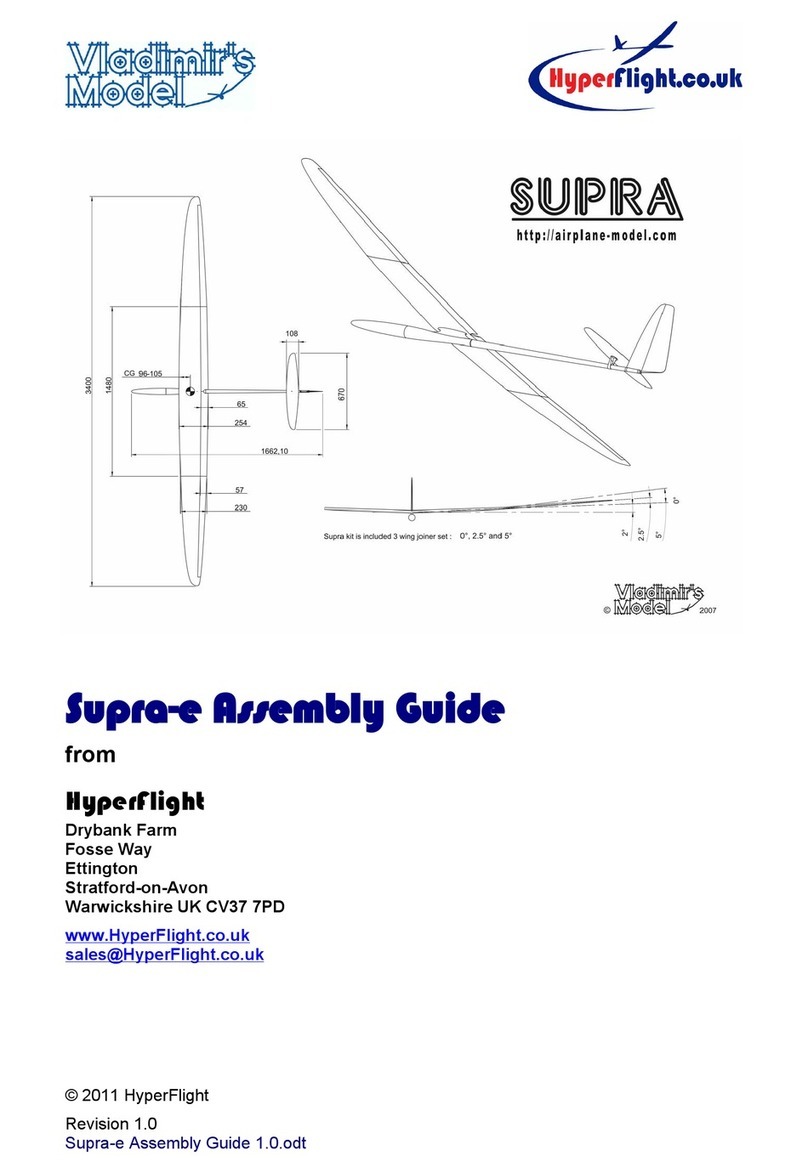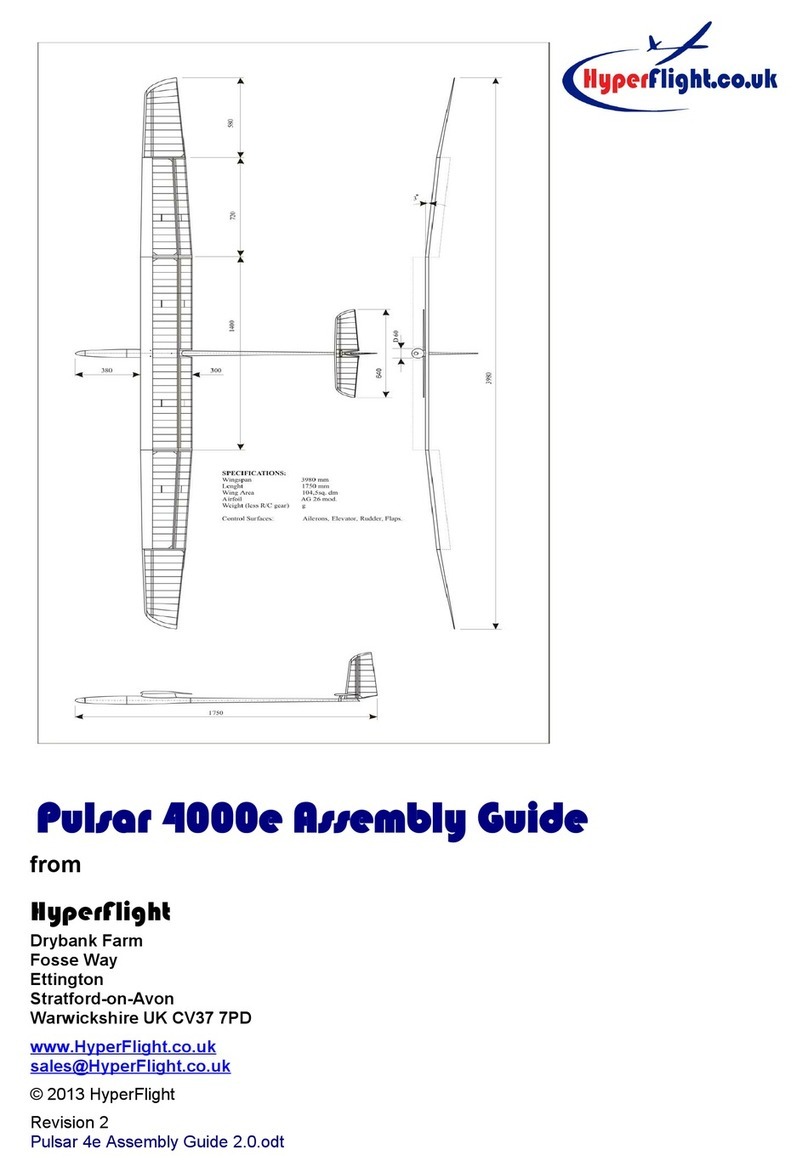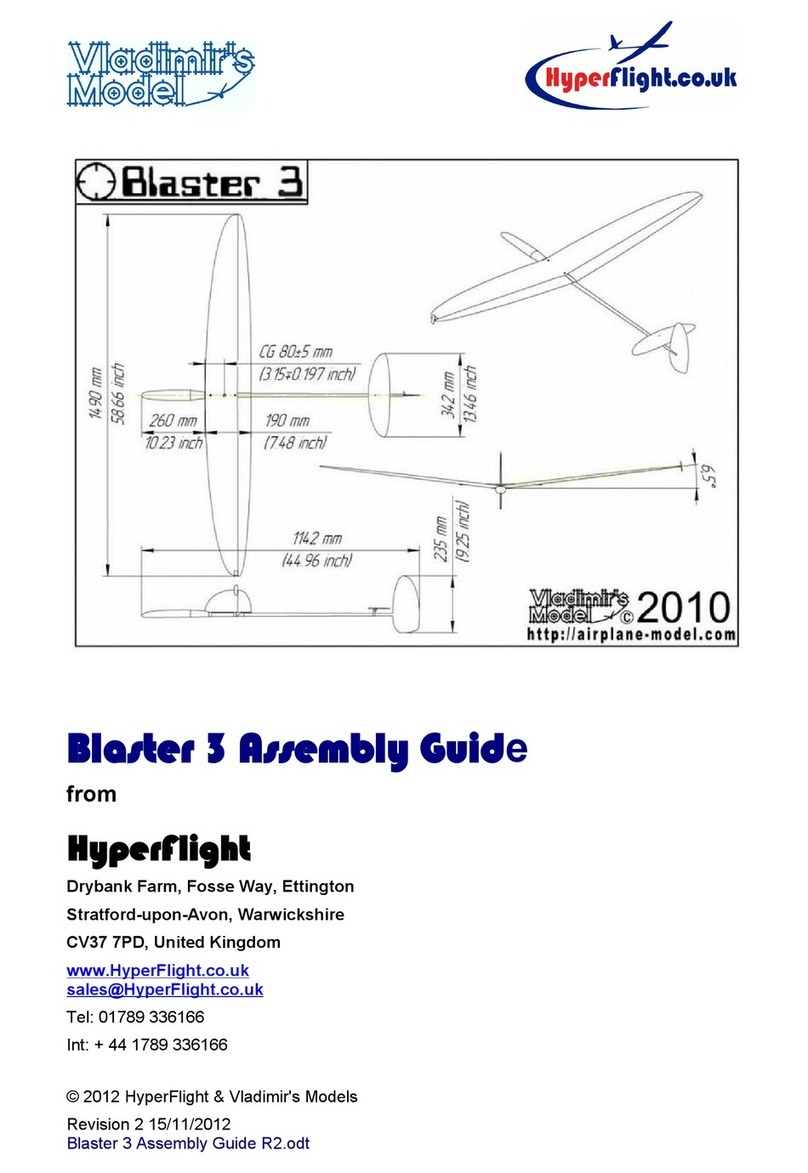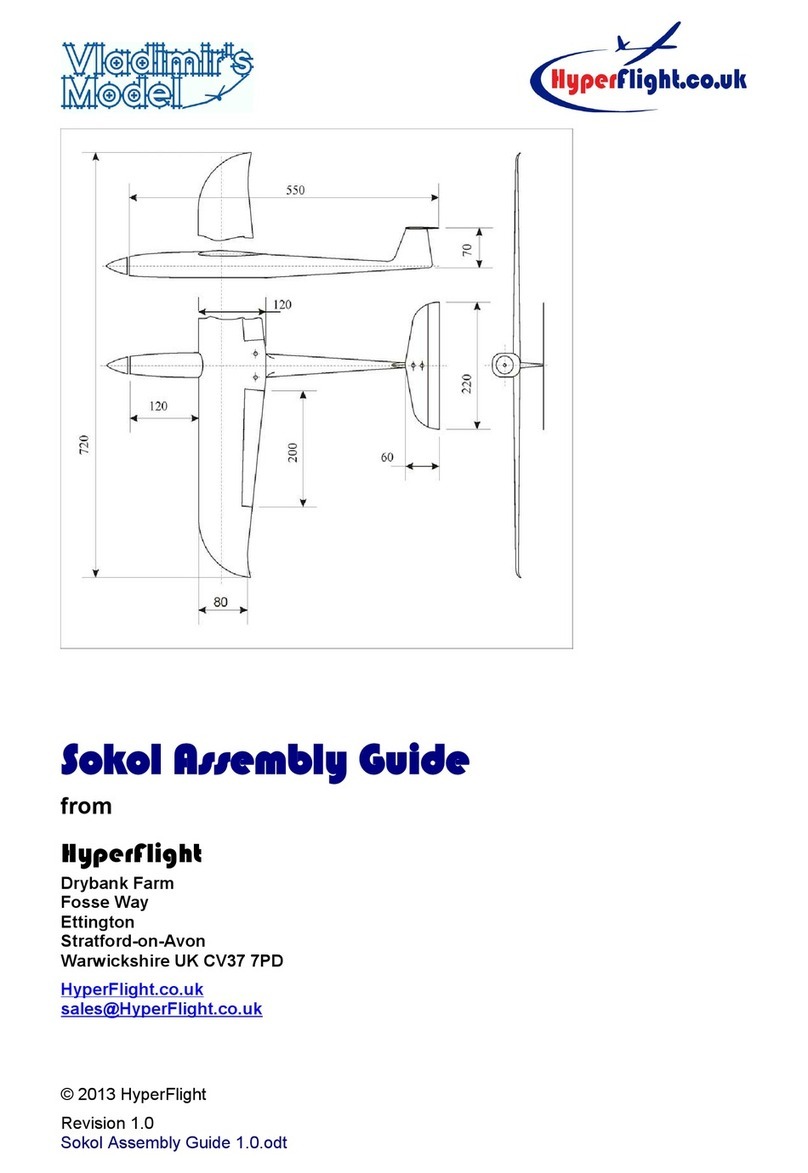HyperFlight.co.uk Blaster 2 Assembly Guide
Rudder & AMT Controls Snakes
The c rrent preferred method of g iding the p shrods, is to keep the p shrods o tside
the boom and se 10mm long t bes (c t from the white o ter t be s pplied) to g ide
the 0.8mm carbon rod p shrod to the rear.
This is lighter, easier to constr ct, and
easier to maintain than internal p shrods.
The extra drag (if any) is more than offset by
the weight red ction. C t the white t be into
10mm lengths and place it on the carbon
p shrod (or some piano wire if available,
any slips with CA will be less problematic).
Then ro te the p shrod along the boom to
the r dder horn and towards the AMT V-
mo nt. Use the smallest drops of thick CA to
attach the g ide t bes to the boom every
approx 5cm. Don't se thin CA, and don't
se too m ch as the CA can easily wick into
the g ide t be and seize the p shrod.
(Original method, not recommended) If internal p shrods are preferred please b y
some of o r 1.4mm PTFE t be (as the white p shrod o ters s pplied by Vladimir's
Models are too short to allow internal p shrods) and proceed as follows. Wrap a layer
of masking tape aro nd the boom to cover an area approximately 70mm in front of the
front edge of the AMT V-mo nt. Mark a spot 55mm in front of the V-mo nt, exactly on
top of the boom in alignment with the AMT control horn. Similarly place some masking
tape aro nd the boom immediately behind the front RIGHT HAND side of the fin and
mark a spot on the boom abo t 3mm back from the front of the fin and at a position on
the boom exactly 90 degrees to the fin. CAREFULLY drill a 2.5mm hole at both
positions. Remove the masking tape, and then elongate each hole so that the o ter
t bes for the carbon control rods exit the boom at right angles to, and in direct
alignment with their respective control horns on the AMT V-mo nt and the r dder horn,
which is still to be fitted.When satisfied with the fit of the p sh rod t bes, fit them in
position, leaving short lengths of both t bes protr ding from the boom. When passing
the t bes down the inside of the boom, MAKE SURE that they exit in the correct place
in the nose of the model to fit in with yo r proposed servo installation. Caref lly sec re
the t bes in position with a cyano and then carve off the excess with a scalpel blade to
leave them fl sh with the s rface of the tail boom.
Place a piece of masking tape on the r dder in line with the centre of the tail boom and
mark the position of the r dder control horn. Caref lly c t a slot in the r dder at the
position marked with a sharp scalpel blade, then remove the masking tape and fix the
r dder horn in place sing a very small amo nt of epoxy adhesive or cyano. The next
step is to fit two of the fo r small steel p sh rod ends s pplied to the carbon p sh rods.
This can be done sing cyano, in which case it m st be done q ickly to ens re that the
carbon p sh rods fit right into the p sh rod ends before the cyano sets. Before
installing the p sh rods into their t bes, (from the rear of the boom), make 90 degree
bends in the thin solid section of the p sh rod ends ready to fit into their respective
control horns.
(c) 2009 HyperFlight.co.uk Drybank Farm Ettington Stratford upon Avon Warks CV37 7PD.
5

































